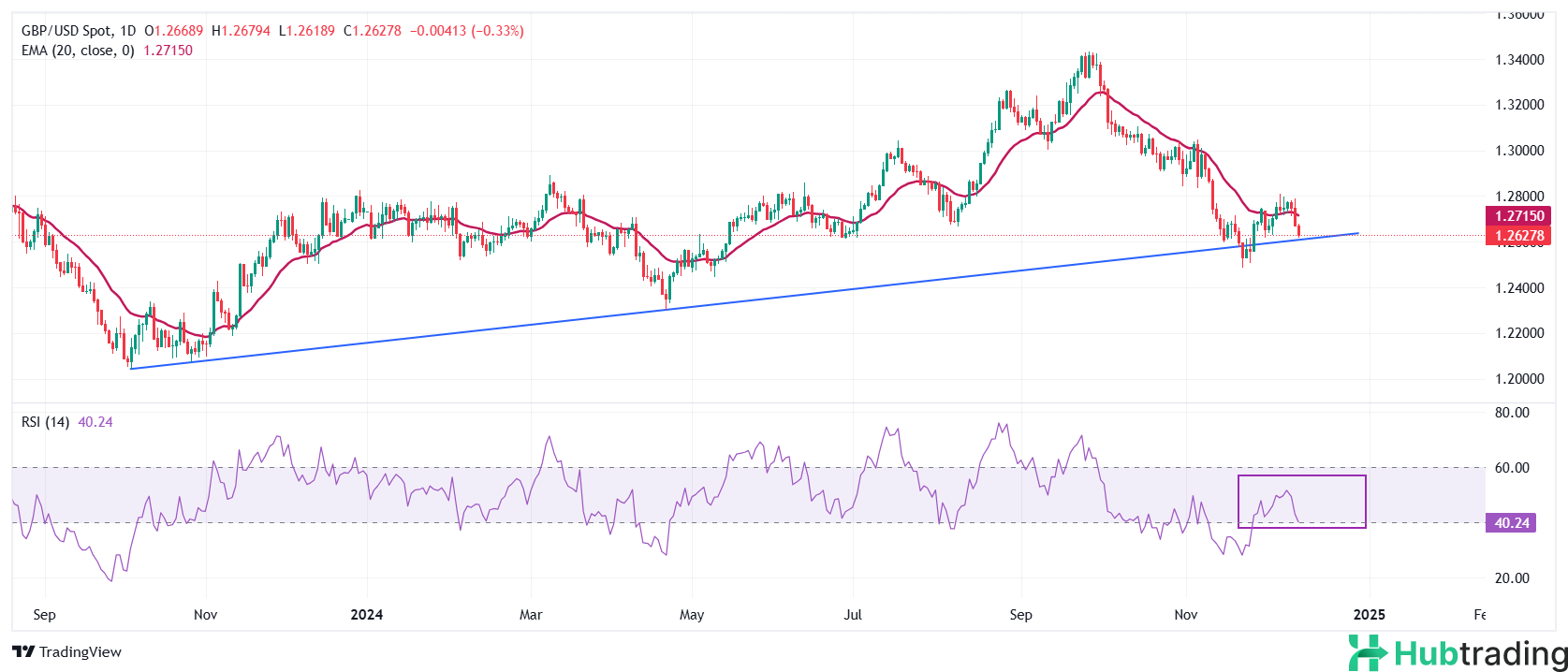- The Pound Sterling drops sharply following data revealing a surprising 0.1% decline in UK monthly GDP for October.
- UK Industrial and Manufacturing Production also contracted in October compared to the previous month.
- Investors anticipate the Fed will pause its policy easing in January after a rate cut next Wednesday.
The Pound Sterling (GBP) sharply declines against its major peers on Friday following a report from the UK Office for National Statistics (ONS) revealing unexpected contractions in monthly GDP and factory data for October. The economy shrank by 0.1%, matching the September decline, while economists had expected a 0.1% growth.
Both Manufacturing and Industrial Production contracted by 0.6% month-over-month, marking a second consecutive decline. Year-on-year, Industrial Production fell by 0.7%, and Manufacturing Production remained flat.
In response to the data, Goldman Sachs lowered its 2024 UK GDP growth forecast to 1%, down from 1.2%. Ongoing weakness in factory activity suggests producers are operating below capacity, with higher employer costs and a slowdown in labor demand potentially hurting domestic consumption.
Looking ahead, investors should brace for increased volatility in the GBP, with UK employment data for the three months ending October and November’s Consumer Price Index (CPI) set to be released. Additionally, the Bank of England (BoE) will meet on Thursday, with expectations that interest rates will remain unchanged at 4.75%.
Daily Digest Market Movers: Pound Sterling Declines Against US Dollar, Fed Policy in Focus
- The Pound Sterling underperforms against the US Dollar (USD), despite the latter giving up its intraday gains. The US Dollar Index (DXY) faces selling pressure above the 107.00 mark.
- The Greenback retreats, even as the hotter-than-expected US Producer Price Index (PPI) for November adds to expectations that the Federal Reserve (Fed) may pause its policy-easing cycle in January. Both headline and core producer inflation rose to 3% and 3.4%, respectively, with a surprising 0.4% increase in the headline PPI month-over-month.
- Rising producer inflation points to higher input costs, which businesses are likely to pass on to consumers, driving up overall consumer inflation and compelling the Fed to remain cautious about further rate cuts.
- Traders are still pricing in a 25-basis point rate cut by the Federal Reserve in the policy meeting on Wednesday, according to the CME FedWatch tool.
Technical Analysis: Pound Sterling Slips Below 20-Day EMA

The Pound Sterling extends its decline to around 1.2625 against the US Dollar after failing to hold above the 20-day Exponential Moving Average (EMA) at 1.2715. The GBP/USD pair is now testing the upward-sloping trendline near 1.2610, drawn from the October 2023 low of 1.2035.
The 14-day Relative Strength Index (RSI) has dropped to near 40.00, and a further decline below this level could signal additional bearish momentum.
On the downside, the psychological support at 1.2500 is expected to act as a key cushion, while the December 6 high of 1.2810 remains critical resistance on the upside.





